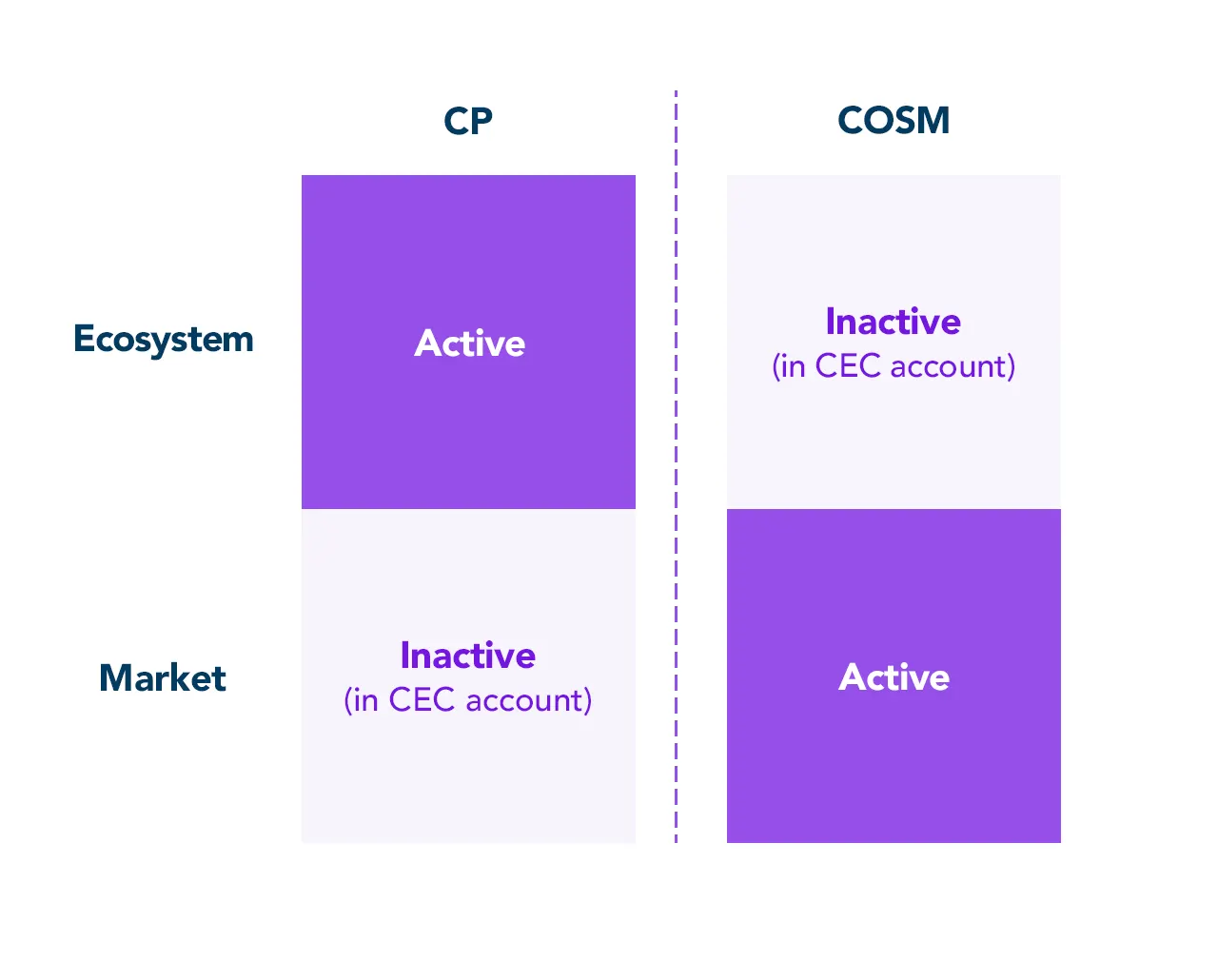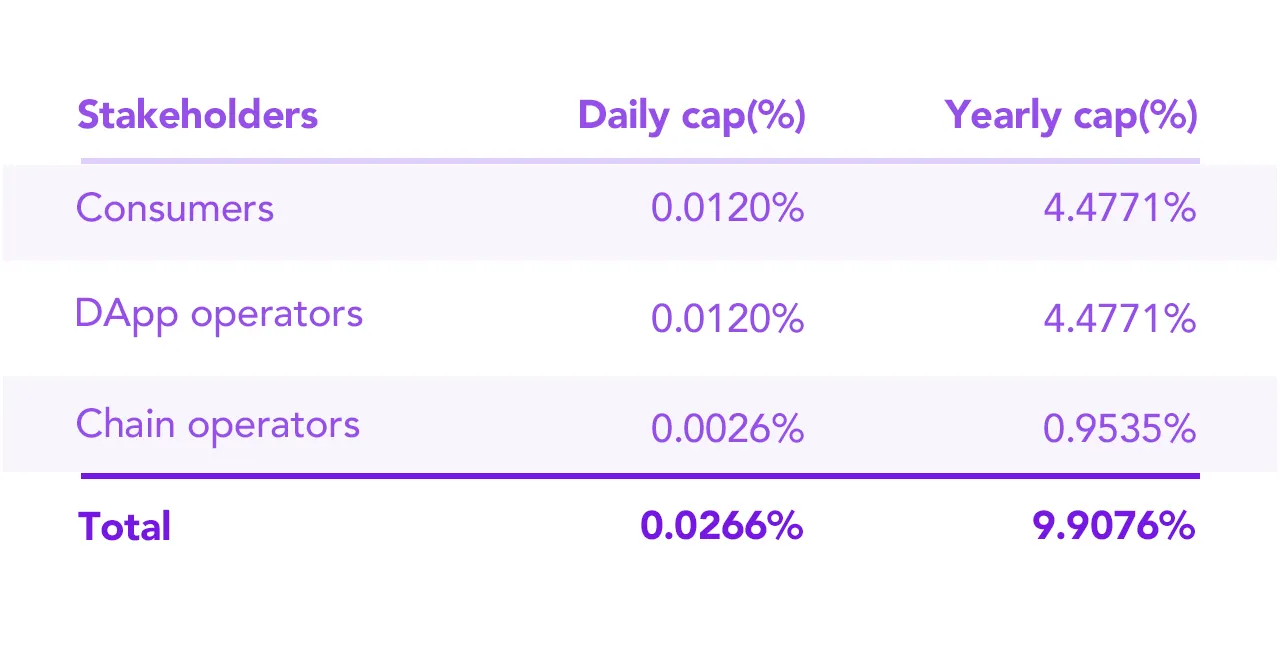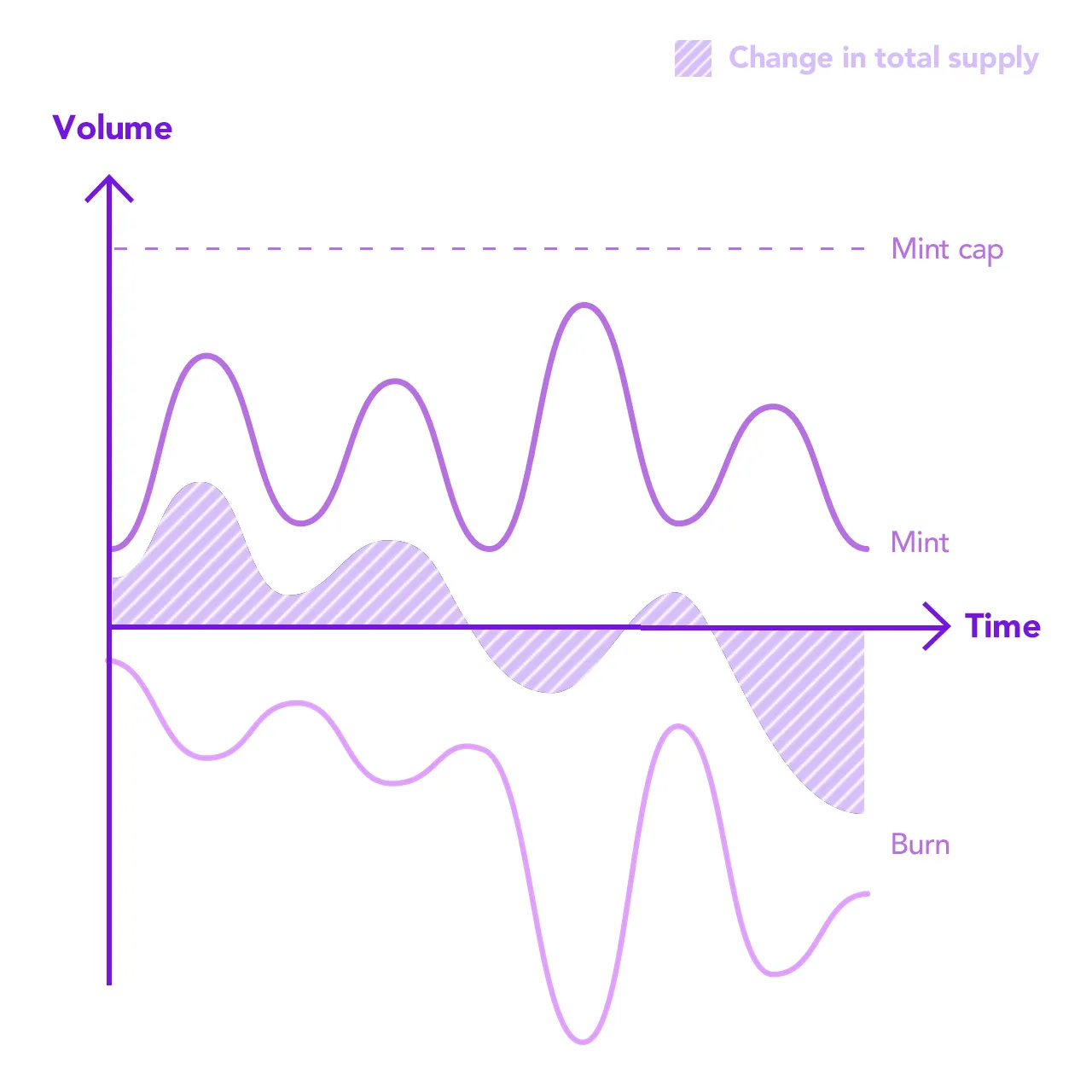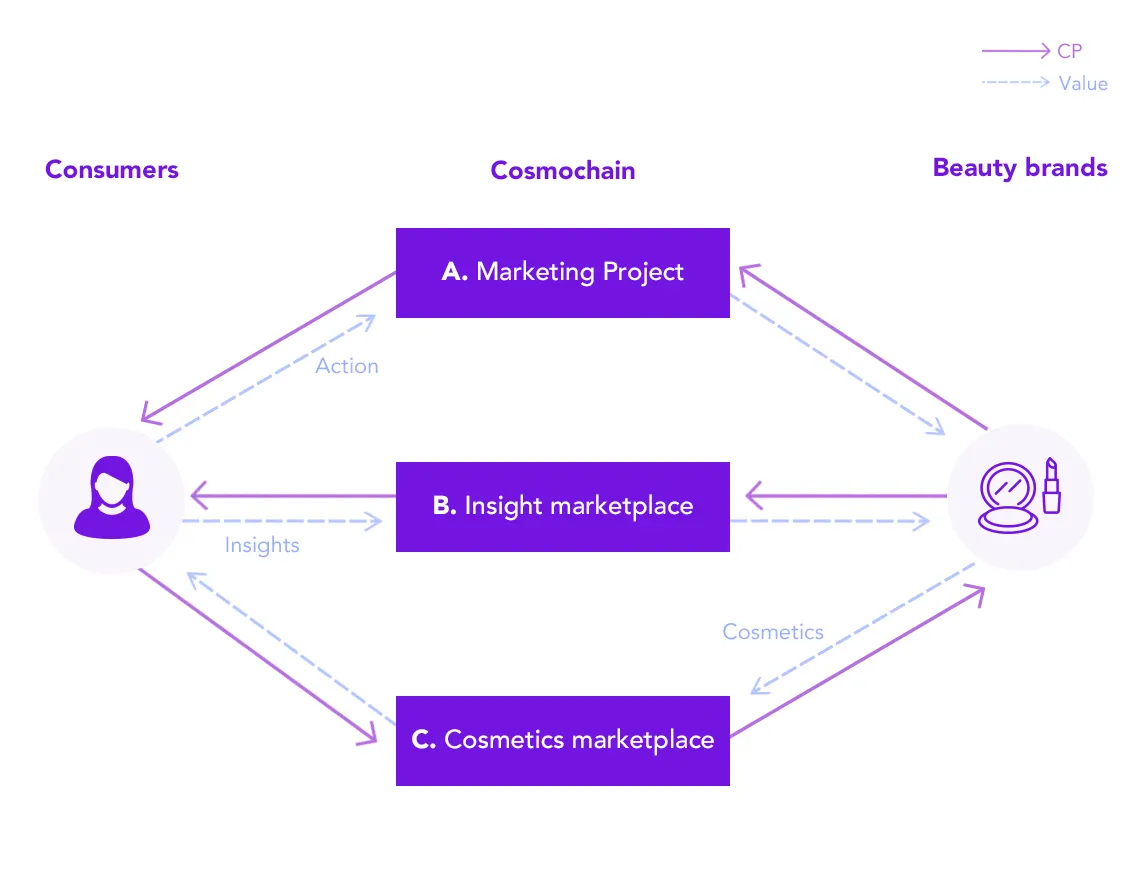Version: 1.0 | Last update: September 30, 2019 | cosmochain.io
Contents
Introduction
Vision of Cosmochain:
Reorganize information within the beauty industry to create 'consumer-centric' database, and thereby develop a new ecosystem that connects consumers with suppliers.
There are various contact points between consumers and suppliers within the beauty industry, ranging from traditional media to various social media, online communities, and on/off-line distribution channels. However, information incurred in each contact point is scattered rather than connected, because each marketing and distribution channels have sole ownership of the information which is not shared. This is why 'consumers' face difficulties finding meaningful information for themselves amidst a myriad of information, and 'suppliers' fail to understand their consumers fully. Cosmochain aims to reorganize information within the beauty industry to a 'consumer-centric' database and create new values by connecting consumers to suppliers.
To realize its vision, Cosmochain will build an ecosystem whose structure facilitates smooth value exchanges between consumers and suppliers, who initially lacked points of contact. In this process, Cosmochain implements a model that utilizes tokens to secure liquidity of funds, and use minted tokens to accelerate the reorganization of information into a consumer-centric database.
Direction of token economy design
Use tokens as the medium of value exchange between ecosystem players.
When designing a token economy, the first and foremost consideration is to ensure that the token is actually used in transactions.
The flow of funds within the beauty industry occurs in marketing and distribution channels which connect consumers and beauty brands, who are the key market players, and extends into the manufacturing sector, connecting beauty brands to OEM(Original Equipment Manufacturing)/ODM(Original Development Manufacturing) manufacturers.
Cosmochain's priority lies in building a structure of virtuous cycle by realizing the flow of funds between the two key players of the beauty industry, from the flows which already exist to others yet to be materialized.
Remove or minimize technological barriers to entry for ecosystem players.
In realizing Cosmochain's vision, it is essential to utilize blockchain for areas involving token and data, but this goal cannot be achieved if the participation of market players is frustrated by technological barriers. To ensure sufficient accessibility, Cosmochain aims to remove or minimize these entry barriers by complementing features that are difficult to access with service level features.
Protect the privacy of individual players, but disclose the overall token flow.
In the process of realizing the ecosystem, sensitive information of individual players or information with data values should not be publicly disclosed. Personal data consumers submit through DApp, the amount of tokens consumers acquire, and details of marketing fee payment that brands make will be managed internally for privacy and preservation of data value. At the same time, Cosmochain will increase the credibility of fund inflow, outflow, and circulation by designing a structure that can transparently disclose the fund flow of the overall ecosystem.
Avoid hyperinflation so that the token serves its function as a utility token.
As can be seen in the real economy, hyperinflation causes price levels to soar, while deflation leads to economic recession. On the other hand, an acceptable level of inflation is rather encouraged as it can drive economic growth. However, inflation through minting implemented by numerous other DApp projects has resulted in hyperinflation, and thus significant depreciation in token value, as they failed to accompany an increase in demand. To prevent this, Cosmochain will address both demand creation and supply control, and stimulate the ecosystem by implementing an acceptable level of inflation.
Improve continuously.
Historically, various monetary policies have been attempted, and conflicting theories and concepts exist. Monetary economy is complex, and even a small change can result in unexpected side effects. Even the Federal Reserve of the United States, which has substantial influence over the global economy, has experienced a history of repeated successes and failures over the past 100 years since its establishment. Therefore, rather than aiming for the perfect solution at once, Cosmochain aims to continuously improve its token model through adjustments in accordance with the changes in the scale of its ecosystem.
Components of token economy
Token structure
The areas in Cosmochain in which tokens are utilized are largely divided into two - Ecosystem where consumers, brands, distributors and consumer platforms participate to exchange values with one another, and Market where market players can freely transfer or exchange tokens.
As for exchanges in the Market, holders of the tokens may exercise their rights based on their free will. Yet in the Ecosystem, there must be regulations to protect each players' rights, as well as a structure that can restrict the transfer of tokens based on the regulations. For this purpose, Cosmochain constructs and operates two tokens which can be used in each of the sectors, and an interface that performs the conversion between two tokens.
•
CP (Cosmo Point): CP is the token used as a medium of value exchange within the Ecosystem, which has a 1:1 value ratio with COSM (Cosmo Coin), and its total supply matches that of COSM. Each user can earn or use CP based on the value exchange methods defined within the ecosystem. To utilize CP for purposes other than usages within the Ecosystem such as exchanges to other currencies or transfers, it needs to be converted to COSM.
•
COSM (Cosmo Coin): COSM is the token used within the Market which can be freely exchanged between users. To utilize COSM for Ecosystem usage, it needs to be converted into CP.
For an effective conversion between COSM and CP, Cosmochain utilizes a combination of Smart-contract and Account called CEC (Cosmochain Exchange Counter). CEC acts as an intermediary bank between COSM and CP and processes the conversion from COSM to CP, or CP to COSM upon certain user's request accompanied by the action of sending the desired amount of tokens for the conversion.
This type of structure makes it easy for everyone to recognize the overall flow and the usages of the tokens. The amount of COSM that CEC holds always equals the amount CP being circulated in the Ecosystem, and similarly, the amount of CP that CEC holds always equals the amount of COSM being circulated in the Market.
Types of accounts
Cosmochain's stakeholders, including each market player within the Ecosystem, can be categorized into four major types. All stakeholders within Cosmochain each hold one Account and can take different actions depending on the account type.
•
CONSUMER: Consumer refers to beauty consumers. They contribute by participating in marketing projects held within Cosmochain or providing personal information and can acquire a percentage of the profit based on their level of contribution in the form of CP. They can use CP for purchasing cosmetic products or participating in events.
•
BRAND: Brand refers to beauty brands. They use CP to execute marketing projects such as advertisement and trial programs for consumers and purchase consumer data. They can acquire CP by selling cosmetic products as well.
•
DO (DApp operator): DO refers to the operators of user platforms and business platforms that connect consumers with beauty brands. Distribution channels where consumers use CP to purchase products and consumer communities where brands use CP to execute market projects fall under this category. They can acquire a percentage of CP circulated in each DApps as a profit, and also by securing new market players into Cosmochain Ecosystem.
•
CO (Chain operator): CO can acquire CP through development and operation activities toward seamless operation of the platform, and receives a percentage of the profit generated from DApps in the form of CP.
In addition to these Accounts for stakeholders, Cosmochain separately manages three special accounts for the effective operation of Cosmochain.
•
CEC (Cosmochain Exchange Counter): CEC is responsible for the conversion of COSM and CP. The total amount of COSM and CP in CEC always equals the total supply of COSM and total supply of CP.
•
MINT: All newly issued CP are issued in this account, and then distributed to corresponding Accounts according to the distribution algorithm.
•
BURN: All quantities to be burned from the Ecosystem are first collected under this account, and then burned.
Total supply of tokens
Overview
Generally, central banks of nations implement monetary policies consisting of money supply management and interest rate adjustment aimed at achieving objectives such as price stabilization or economic growth. Similarly, through a combination of mint and burn, Cosmochain intends to manage the total supply of CP, the currency for Cosmochain Ecosystem, as well as COSM whose total supply equals that of CP, and thereby expand and stabilize the ecosystem.
All mint and burn within Cosmochain Ecosystem is implemented by utilizing CP, the currency for the ecosystem, and are each implemented in MINT and BURN accounts respectively. In the case of COSM, corresponding amount of tokens are minted and burned in CEC, so that its total supply matches that of CP.
The total supply of COSM within Cosmochain Ecosystem is regulated based on two fundamental principles explained below.
1. MINT only when contribution to the ecosystem is clear
Liquidity provided by minted tokens within the ecosystem should be used in the area which can best reinforce that ecosystem. The most important condition required for the development of Cosmochain ecosystem is the reorganization of information to a 'consumer-centric' database, and by encouraging certain behaviors of the participants which are directly related to this objective, the construction process of this large-scale database can be optimized.
Besides, by restricting mint to only when contribution is confirmed, rather than minting at fixed amount, unnecessary increase in supply as well as abusing activities can be prevented.
"Contribution" as used here, refers to the contribution towards the construction of a consumer-centric database, which is the long-term objective of Cosmochain. Currently, the following actions can be defined as "contribution" for each type of market participants.
•
Consumers: Provide personal data in the process of using the DApp. For example, consumers may submit an evaluation of cosmetic products they have tried, input skin type or preference information, provide a history of purchased products, or update the list of products they currently use. Note that limits regarding general usage behaviors will be defined, and diminishing rates will be applied to any actions beyond these limits, and data provision beyond these limits will not be approved as contribution.
•
DApp operators: Newly acquire users who will provide meaningful data. Note that not all new users of the DApp will be approved, but will be limited to cases in which provision of meaningful data can be confirmed on the blockchain. In the case where multiple DApps exist, and there are overlapping users between the DApps, only the first DApp to acquire that user will be approved as a contribution.
•
Chain operators: Operate the chain, so that the ecosystem functions properly, and work with affiliates towards the development of the ecosystem, including activities such as actively exploring new use cases and attracting new DApps.
Cosmochain records these contributions of participants on blockchain on a daily basis, then determines the number of tokens to be minted. On the following day, Cosmochain distributes minted CP to each of the participants' accounts. Note that tokens are not minted infinitely proportional to the level of contribution as it increases, but determined within the maximum capacity for each participant, as outlined in the chart below, to prevent hyperinflation.
Daily cap, which is the maximum daily mint limit, is the ratio calculated based on the previous day's total supply of CP, in which different daily caps exist for each type of market participant. If the daily cap is reached for the defined participant type, then CP will be distributed proportionally based on each participants' graded level of contribution. In the case where the daily cap is reached for all participant types, the maximum CP which can be minted daily is 0.0266% of the previous day's total daily supply and is designed to be less than 10% when converted to yearly basis.
2. Regulate total supply through BURN
For cryptocurrencies, "burn" refers to the act of permanently eliminating the tokens from circulating supply. Generally, burn is executed by sending the tokens to an address which is not recoverable, or by using the burn function on the token's smart contract. When CP is burned, the circulating supply is decreased by the corresponding amount of CP.
The main purpose of CP burn is to prevent an excessive increase in supply compared to the token demand. Also, because burn happens proportional to the economic activities incurred within the ecosystem, correlation between the expansion of Cosmochain ecosystem and token value can be established.
Burn is executed in two instances. Method and scale of the burns are explained below.
•
First, a portion of all transactions between ecosystem participants will be burned, similar to the concept of fee payment. For example, if revenue is incurred as a result of DApp Operator attracting brand advertisement within the DApp, part of this revenue will be burned. The rate of burn depends on the type of transactions, and this rate will be further discussed later in 'Ecosystem circulation' section.
•
Second, tokens that have lost utility within the ecosystem will be burned. For example, the expiration date will be assigned to minted CP which consumers earn through their contributions. Tokens that have not been used within the expiration date will be deemed to have lost its utility, and thus will be burned. This will be similar to the operational method of the regular point system, utilized in various platforms.
Implication
Based on the aforementioned principles, total supply is adjusted organically according to the level of each participants' contribution or level of the ecosystem's activeness.
The amount of tokens newly minted is determined within the mint cap depending on the level of contribution of the participants, and the amount of tokens burned will increase proportional to the economic activities which will increase according to the ecosystem's growth. Therefore, the increase in total supply will decrease as time proceeds and the ecosystem grows. If the ecosystem expands sufficiently in the long-term and the number of tokens burned increases, total supply may decrease.
Ecosystem circulation
Token circulation within Ecosystem
Circulation of funds within Cosmochain ecosystem can be defined as the sum of all transactions which involve exchange of values between the main players- consumers and beauty brands - based on the consumer-centric database secured within Cosmochain. But, merely establishing a structure that enables exchange between specific players is not adequate for actual, effective circulation of funds.
Cosmochain aims to achieve its objectives by not only establishing a structure that enables exchange between users but also utilizing the following methods.
•
For the circulation of funds involving two main players, clear drivers to execute expenses for both parties are essential, rather than one-way exchanges. By focusing on resolving beauty brands' problems that did not receive attention or were not solvable in the existing beauty industry, Cosmochain creates the drivers of consumption.
•
At the same time, it is also essential to establish a structure in which paid expenses are distributed to counter-players, rather than solely benefiting the platform which mediates the transaction. Cosmochain enables users to re-use the acquired tokens by delivering part of the expenses paid by the beauty brands to consumers in the marketing channels and data business sectors which especially lack these distributions.
There can be various use cases that accompany transactions within Cosmochain - from beauty brands identifying relevant consumers through segmented targeting based on consumer data and executing targeted advertisement, to curation commerce in which consumers will be recommended with the most suitable cosmetic products for themselves. Cosmochain develops a structure in which these use cases can be realized in a single or multiple DApp(s), and use CP as the currency for all transactions to create token flow within the ecosystem.
Three types of transactions could be made between consumers and beauty brands within Cosmochain, and the token flow for each of the types is explained below.
A. Marketing project
All activities beauty brands engage in for the purpose of advertising their products - paying expenses to expose their products or promotions to target customers - fall under this category. This includes the execution of targeted advertising based on consumers' preferences toward specific product types or consumers' satisfaction on previous purchases, recruiting for product trials targeted at participants of specific skin types, limited exposure of promotion to users who have used similar products in the past, etc.
In the case of these projects, token flow is as follows. CP that the brand already possesses, or CP that is charged with COSM purchased from exchanges will be distributed to Consumers, DApp operators, and Chain operators which participated in the project based on the rate pre-determined according to the type of the project. Furthermore, 5% of the total project's expense will be transferred to the burn wallet, then burned.
B. Insight marketplace
Beauty brands desire to obtain consumer insights such as consumers' purchase behavior, reactions to purchases, comparison with other brands' products, etc., but channels and methods for such insights are currently limited. Cosmochain can satisfy the brands' needs by utilizing demographic data by consumers, preference data by product categories, information about products of interest, evaluation of purchased products, etc., recorded on the blockchain. Under this transaction type, beauty brands can purchase consumer insights for product development and production, or branding and marketing, and conduct surveys via micro-pooling.
In this case, brands can proceed with the CP which they already possess or have purchased, and CP will be distributed to consumers, DApp operators, and Chain operators according to the type of projects, and 5% of the expense will be transferred to the burn wallet and burned.
C. Cosmetics marketplace
Unlike the other two types, the subject which pays the expenses in this sector are consumers. Based on the data recorded within Cosmochain through their usage of DApp, consumers will be recommended with products that a similar group of consumers had been satisfied with, and these recommended products can be purchased.
Consumers can use CP acquired within the service or converted from COSM bought from exchanges, in combination with other payment methods to purchase products. The payment amount corresponding to CP will be distributed to Brand, DApp operator, Chain operator, and 1% of the CP used will be moved to Burn wallet, and then burned.
Example of token flow: Targeted advertising
Because the actual pattern of business flow is different for each of the three types of transactions described above, Cosmochain works with individual DApp operators to develop a token flow that best fits the business flow, upon the verification of the use cases' values for consumers and brands. Taking the example of 'targeted advertising' from section A. Marketing project, the specific token flow is as follows.
The business flow of the brand's 'targeted advertising' to consumers takes place in the order of signing the contract, launching the project, closing the project, providing reports, allocating, then distributing. First, the DApp operator signs an advertising contract with the brand. Based on the terms of the contract, the advertisement will be exposed only to the targeted users, and when the contract end date approaches, the advertisement will be terminated. After providing the results of the advertisement to the brand, the DApp operator receives payment from the brand, based on the terms of the contract as well as the advertisement performance, and lastly distributes the amount deposited to consumers and other stakeholders.
Token flow within this business flow begins at the "Allocate" step.
•
In the "Allocate" step, when the DApp operator receives advertisement fee for the executed project from Brands, that advertisement fee will be converted to COSM through Market such as exchanges, and then deposited to Brand account. Deposited COSM will be converted to CP, and sent to the Project account.
•
During the "Distribute" step, CP in Project account is distributed according to distribution rule for the corresponding project to each account including Consumer accounts who contributed to the project, as well as DApp operator, Chain operator, and Burn accounts.
Disclaimer
This document has been prepared as a reference to provide information regarding long-term vision and overall token model of Cosmochain to those who are interested in Cosmochain. This document serves no purpose of recommending investment in COSM or CP, which are currencies of Cosmochain ecosystem, and is entirely irrelevant to such purpose.
This document is written as-is based on the time it has been last updated, and all information contained herein including the actual implementation of the token model is subject to change following Cosmochain team's policies or decision-making without prior notice.
The Cosmochain Team holds no legal responsibility for any items or content of this draft Whitepaper and makes no representations or warranties whatsoever. Any results from making decisions based on this document as a reference are the responsibility of the decision-makers themselves. In other words, Cosmochain team holds no responsibility for any damages, losses or any other results and impacts made by the use of this document.
COSM and CP explained in this document are utility tokens, and are not intended to constitute security token, or any other capital market products. Possession of COSM or CP does not entitle you to any ownership or any other interest in Cosmochain.






